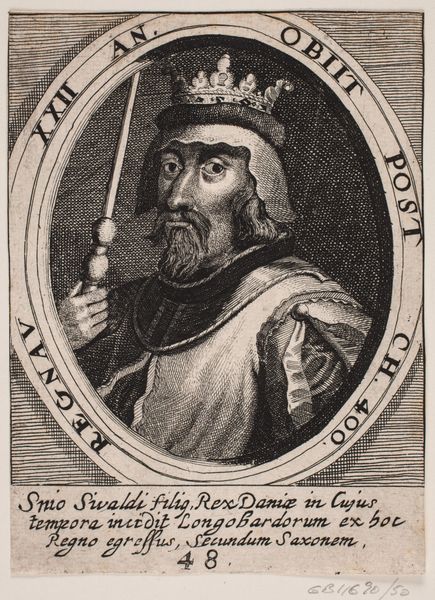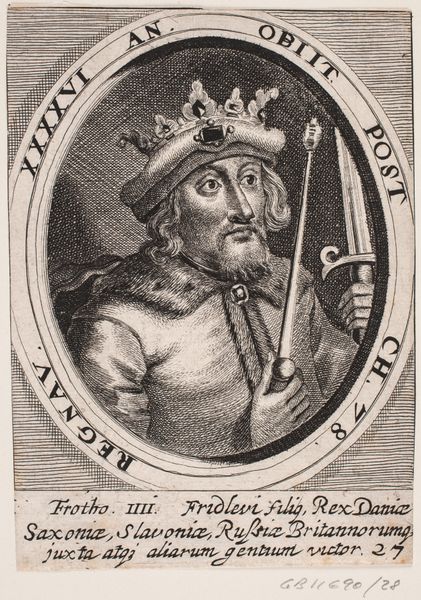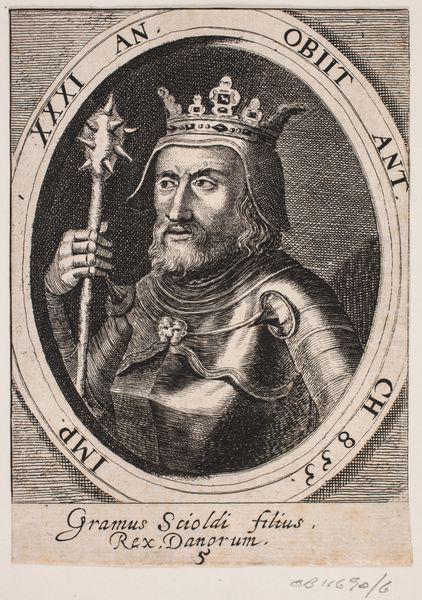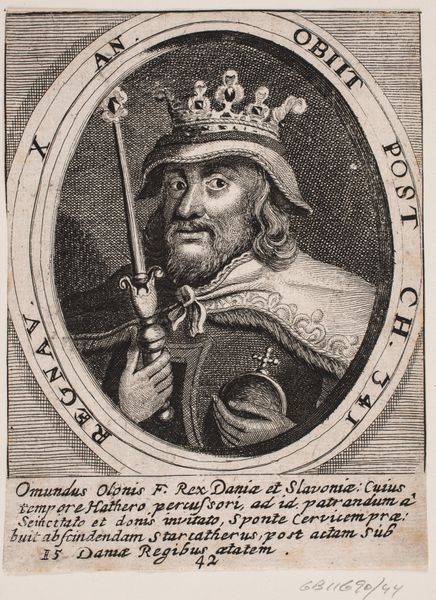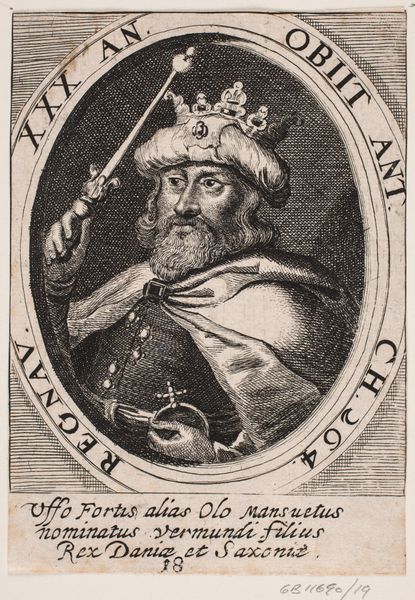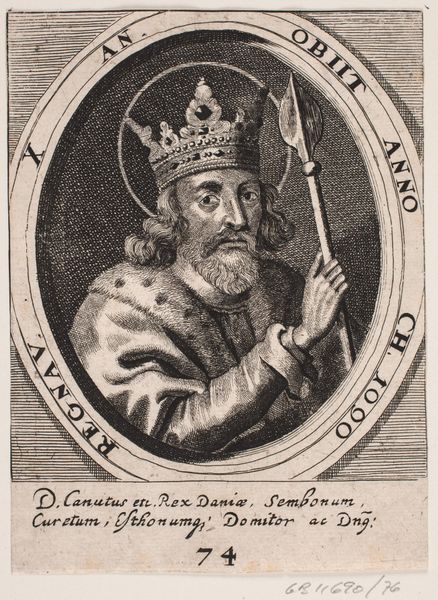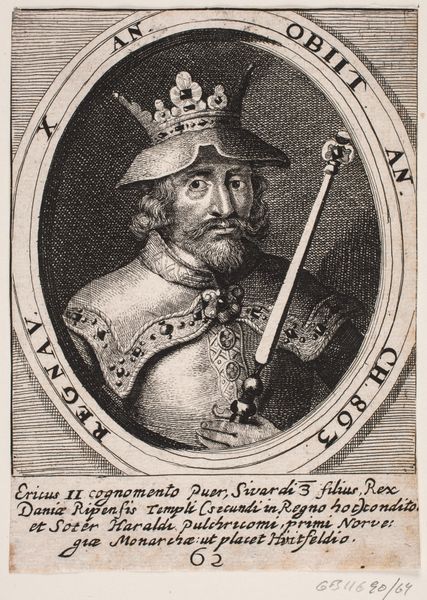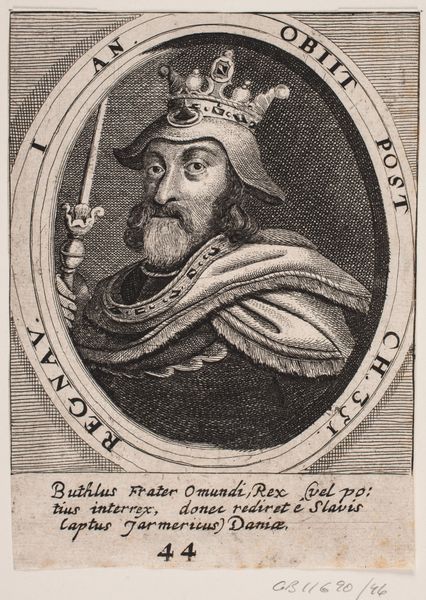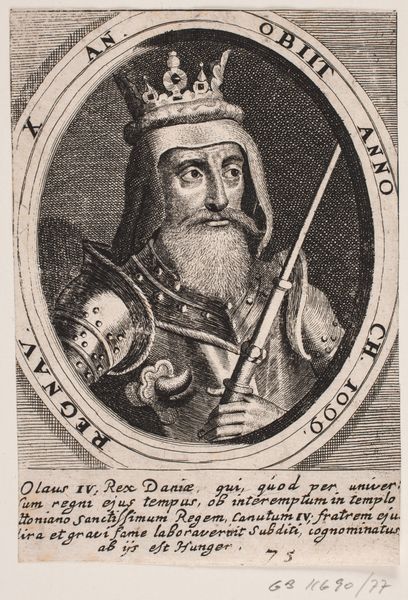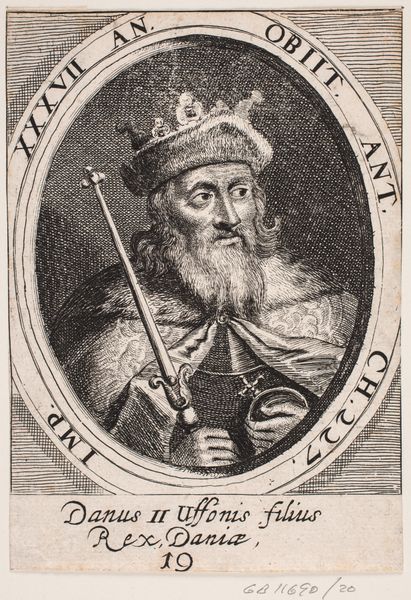
print, engraving
#
portrait
#
baroque
# print
#
history-painting
#
engraving
Dimensions: 140 mm (height) x 100 mm (width) (bladmaal)
Curator: We're looking at "Frode Fredegod," a 1646 engraving residing here at the SMK. Editor: The impression I get immediately is one of gravitas, a kind of stoic authority etched into every line. The subject’s gaze is direct and unwavering. Curator: Absolutely. Let's consider the historical and social weight such images carried. This isn’t just a portrait; it's a carefully constructed statement of power and legitimacy in a period defined by constant political maneuvering. Consider what this engraving, a relatively accessible medium, does to perpetuate that image. Editor: Indeed, the imagery reinforces that power narrative. Note the details: the orb and sword, the regal fur trim and, most crucially, the crown. The items all speak of kingdom, dominance, and succession. Even his stern face suggests an unbreakable lineage, carved here for us, to endure over time. Curator: And this enduring image then shapes, for better or worse, perceptions of leadership. It ties this particular ruler into an accepted narrative, a lineage meant to both justify their reign and potentially marginalize alternative, competing perspectives. Editor: It’s fascinating how an artist can synthesize various symbols – crown, sword, pose – to solidify a ruler's presence across time. He becomes almost archetypal. A single object holds not just aesthetic information but historical, psychological, and cultural associations, right? What would be communicated with an orb versus a different royal symbol? Curator: That’s key. This work is doing much more than representing. It’s working actively to legitimize. Let us consider who had the agency to make such imagery and how their perspective might be prioritized here. What other historical figures or communities might be deliberately omitted by framing Frode as a supreme ruler? Editor: Understanding what symbols like the orb and the sword communicate collectively enhances how we interpret such historical portraits, I think. Curator: By recognizing this image within larger socio-political and representational systems, perhaps we become better equipped to resist uncomplicated hero narratives in visual and popular culture today. Editor: Precisely. And the images, along with all of the context surrounding their creation, all shape what and how we perceive a historic figure long after that leader's passing.
Comments
No comments
Be the first to comment and join the conversation on the ultimate creative platform.
